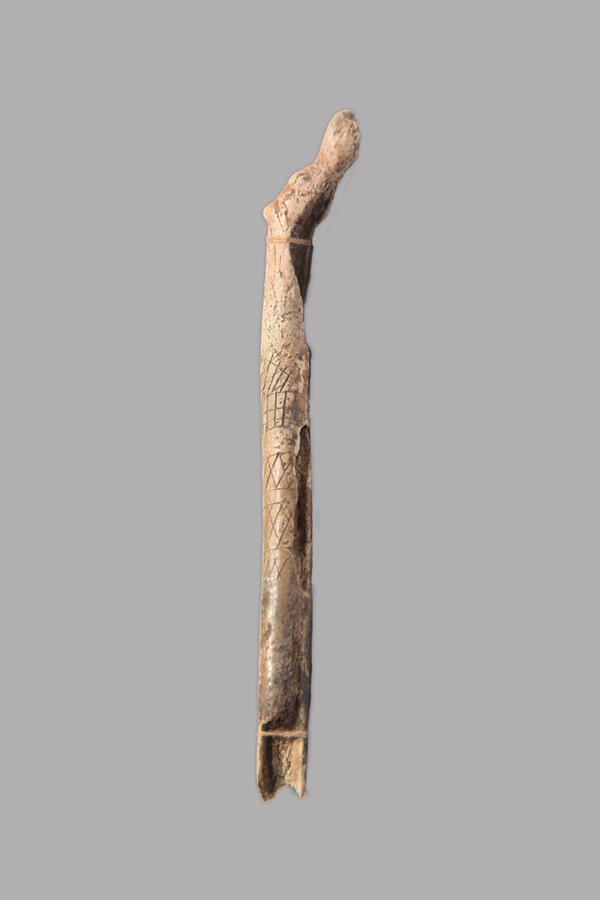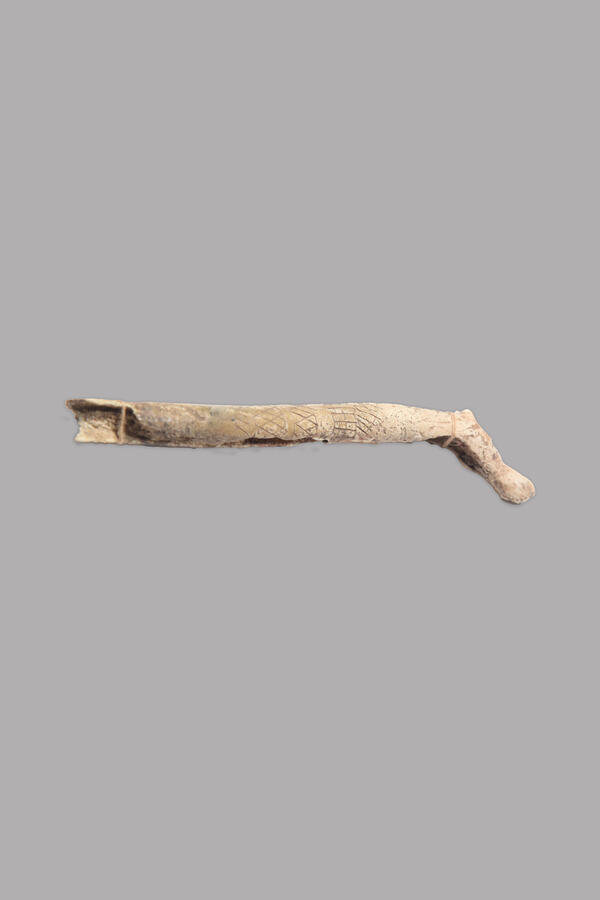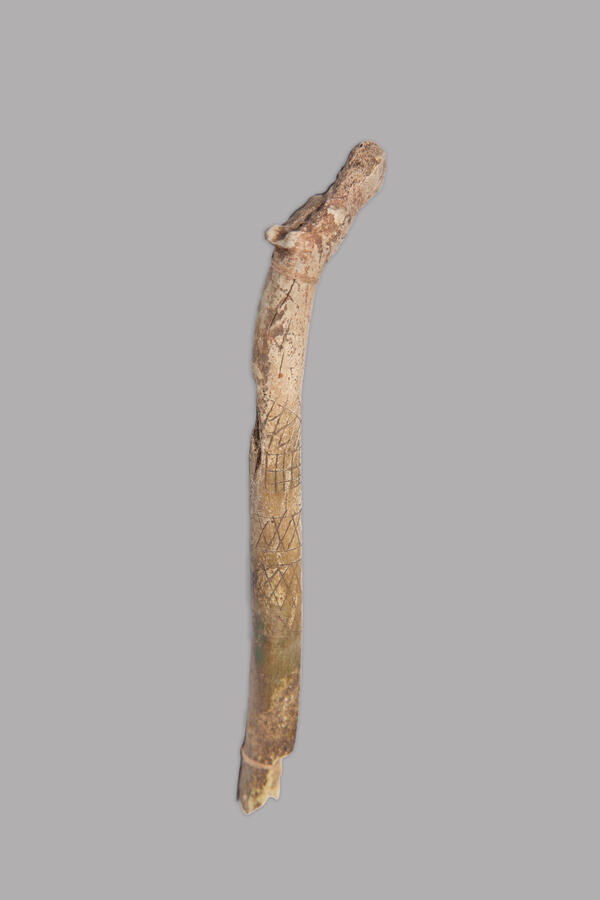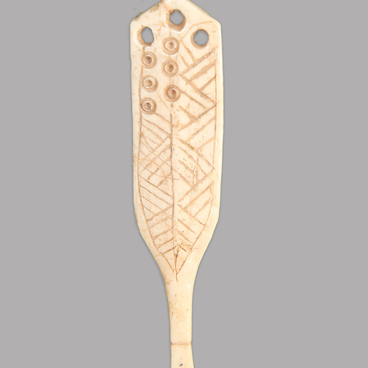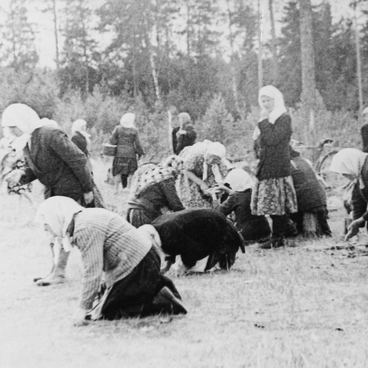The horse is one of the most popular motifs of decorative and applied arts all over the world. The ancient population of the Kama region had a cult of the horse as early as the Ananyino culture, which is dated to the 9th–3rd centuries BC. The images of this animal are often found in the sacrificial complexes and bone beds of the Upper Kama region. This bone handle with an image of a horse’s head was found in a male burial of the Plyosinsky burial ground in the Komi-Permyak district 60 years ago.
The horse in the Finno-Ugric mythology is a sacred animal of the sun god, a symbol of light, joy, good luck and renewal of nature. The Mansi people have an old myth about how seven sons of the “White Old Man”, the supreme god Num-Torum, were at odds over ruling the Earth. The brothers began to fight each other, and the creator himself came down to the Earth to restore order. He told the sons that he who would be the first at dawn to ride up to his heavenly palace, where free horses graze, and tie his horse to the silver pole, would be the chief among them and over all people.
The youngest son of the god, the rider Mir-Susne-Hum, “the man who oversees the world”, proved to be the most agile and swift. It was he who became the patron of people and the mediator between the worlds of the living and the dead. The faithful companion of the young god, the horse, became the main sacred animal, whose images were intended to propitiate the god. As agriculture and farming developed, the significance of the horse increased even more.
In the Udmurt legends there is a radiant creature “burdo-val” — a horse that grows huge wings during the night. Its master was banned from seeing them, so he had to warn the horse of his approach by whistling. One day the man forgot to do that, and burdo-val lost his wings forever. The Komi-Permyaks believed in the legend about a warrior Pera, who ascended to the supreme deity En, the sun god, riding a mighty silver horse.
The image of a horse is often found on talismans, amulets, as well as personal items: handles, bone combs, two-horse rattle pendants. Most items were found not during archaeological excavations, but as so-called hoards or as single accidental finds, which suggests their popularity in everyday life.
The horse in the Finno-Ugric mythology is a sacred animal of the sun god, a symbol of light, joy, good luck and renewal of nature. The Mansi people have an old myth about how seven sons of the “White Old Man”, the supreme god Num-Torum, were at odds over ruling the Earth. The brothers began to fight each other, and the creator himself came down to the Earth to restore order. He told the sons that he who would be the first at dawn to ride up to his heavenly palace, where free horses graze, and tie his horse to the silver pole, would be the chief among them and over all people.
The youngest son of the god, the rider Mir-Susne-Hum, “the man who oversees the world”, proved to be the most agile and swift. It was he who became the patron of people and the mediator between the worlds of the living and the dead. The faithful companion of the young god, the horse, became the main sacred animal, whose images were intended to propitiate the god. As agriculture and farming developed, the significance of the horse increased even more.
In the Udmurt legends there is a radiant creature “burdo-val” — a horse that grows huge wings during the night. Its master was banned from seeing them, so he had to warn the horse of his approach by whistling. One day the man forgot to do that, and burdo-val lost his wings forever. The Komi-Permyaks believed in the legend about a warrior Pera, who ascended to the supreme deity En, the sun god, riding a mighty silver horse.
The image of a horse is often found on talismans, amulets, as well as personal items: handles, bone combs, two-horse rattle pendants. Most items were found not during archaeological excavations, but as so-called hoards or as single accidental finds, which suggests their popularity in everyday life.

